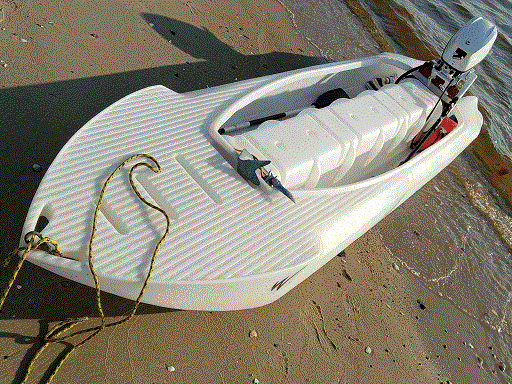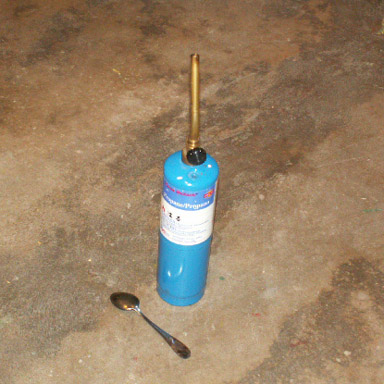A kayak fisherman recently posted his personal offshore capsize report on a Connecticut fishing blog. It was detailed and well written, and I copied some paragraphs from it that I found particularly interesting.
In his report the writer exposed the brand name and model of his fishing kayak, a top-of-the-line, 34″ wide sit-on-top, but I replaced these explicit names by the phrase “SOT fishing kayak” because the problem described is not necessarily typical to that particular brand or model – It is true for all SOT kayaks.
The writer took care of adding his advice to the detailed facts he described in his own words:
“· ALL SAILORS SHOULD DO HOURLY CHECKS OF THE BILGE.
· I noticed waves splashing over my bow and around my FWD hatch, then draining into the wet well. Wave frequency was every 4 seconds, or so.
· I didn’t hear any unusual sounds, but the wind was blowing and my hood was up.
· I wasn’t worried because my [SOT fishing kayak] had seen much rougher seas and wind.
—
· Shortly after… I noticed that my Kayak wanted to tilt to the left twice
· This had never happened before.
· DON’T IGNORE CHANGES IN HOW YOUR YAK HANDLES
· I wasn’t sure why it did this but I decided to make a direct course to the closest part of the island (15º more to the left)
· Now 30 ºoff the seas, the first small wave that hit me capsizing my Kayak.
· I remember saying to my self, “This can’t be happening, my yak is 34” wide…
· When I got back to the surface (Thank you PFD) I said to myself “What is the next step?” I turned my yak over. This was the easiest part of this self-rescue.
· PRACTICE THIS EVERY YEAR IN DEEP WATER
· After righting my Kayak I went to clime back into the cockpit (I snorkel often from my YAK) and noticed the draft was low
· Looking into the cockpit I noticed the water level in the wet well was at the bottom of the upper decal (in-front of the drive). This is about an inch higher than when I am sitting in the YAK. (estimated 35-40 gallons of water.
· DON’T DISPARE WHEN THINGS DON’T WORK OUT, SELECT A NEW STEP IN THE PLAN.
· At this point I realized that I was not going to be able to de-water with the small sponge I had onboard.
· ALWAYS CARRY A KAYAK PUMP.
· (Dude has done this for a long time)
· At this point I started swimming (towing my [SOT fishing kayak]) to the Island that I was heading for. (58º water temp). Current was flowing out carrying me to the left.
· SWIM WITH OR ACROSS THE CURRENT
· I remember that from Boy Scouts!
· As I swam I noticed that I was being set to the left, at one point I remember reminding my self to stay focused on my swimming as not to miss the island.”
After reading the entire report, the first question that comes to mind is
-“How can water get inside a sealed SOT kayak hull?”
The answer is that SOT fishing kayaks have typical weaknesses:
1. Parting Line
All sit-on-top kayaks are rotationally molded. This means that molds used for molding such kayaks have a top part and a bottom part, which have to be perfectly adjusted to each other every time before the mold is put in the oven. Less than perfect fit can result in a kayak with a hull that’s weak along the line where its top and bottom parts meet, which is called the Parting Line. In some cases a poor fit in the mold can result in tiny holes along the parting line. Parting line weakness and holes are not easy to discover. This is particularly dangerous because a SOT’s parting line is close to its waterline, and often submerged in water.
2. Scupper Holes
SOT kayaks have scupper holes molded into their hulls. Because of the geometry of the SOT hull and problems of heat distribution during the rotational molding process, it’s difficult to achieve optimal wall thickness in the scupper holes’ area. This results in scupper holes that typically have thinner walls than other parts of the hull. Strain put on the scupper holes can cause cracks along the parting line within them, and result in water leaking into the hull. Such cracks in the scupper holes can appear after using them as stakeout pole points, attachment points for wheeled carts, through inadequate storage, and in some cases just as a result of normal use.
3. Wear and Tear
SOT kayaks, like other kayaks, can develop wear-and-tear holes in their hulls in the course of normal usage. Such holes can be caused by cracks, cuts, deep scratches and punctures, but they are particularly dangerous when they occur in this type of kayak because its closed hull makes it difficult to detect them, whether on water or on shore.
4. Deck Gear
All fishing kayaks are outfitted with deck gear, especially rod holders. This requires drilling holes in the hull, and attaching the gear with either bolts or rivets. Any hole in a Polyethylene hull presents a potential problem because it’s hard to seal effectively. Over time bolts can become loose and make the holes lose their water tightness. This problem is particularly dangerous in SOT kayaks for two reasons: One is because their decks are so close to the waterline, and the second being the fact that the closed hull makes it harder to detect leaks.
Unlike kayaking, kayak fishing is more of a stationary sport. This is an important fact because when you’re paddling a kayak that’s partially filled with water it handles differently from a dry one, but the difference is hardly perceptible when you’re not paddling. That is to say that the chances of you detecting a leak in a SOT hull while you’re fishing from it are smaller than if you paddled it, or if you fished from another kayak that does not feature a closed hull.
Read more about ocean kayak fishing »
Do you have any questions for us?











